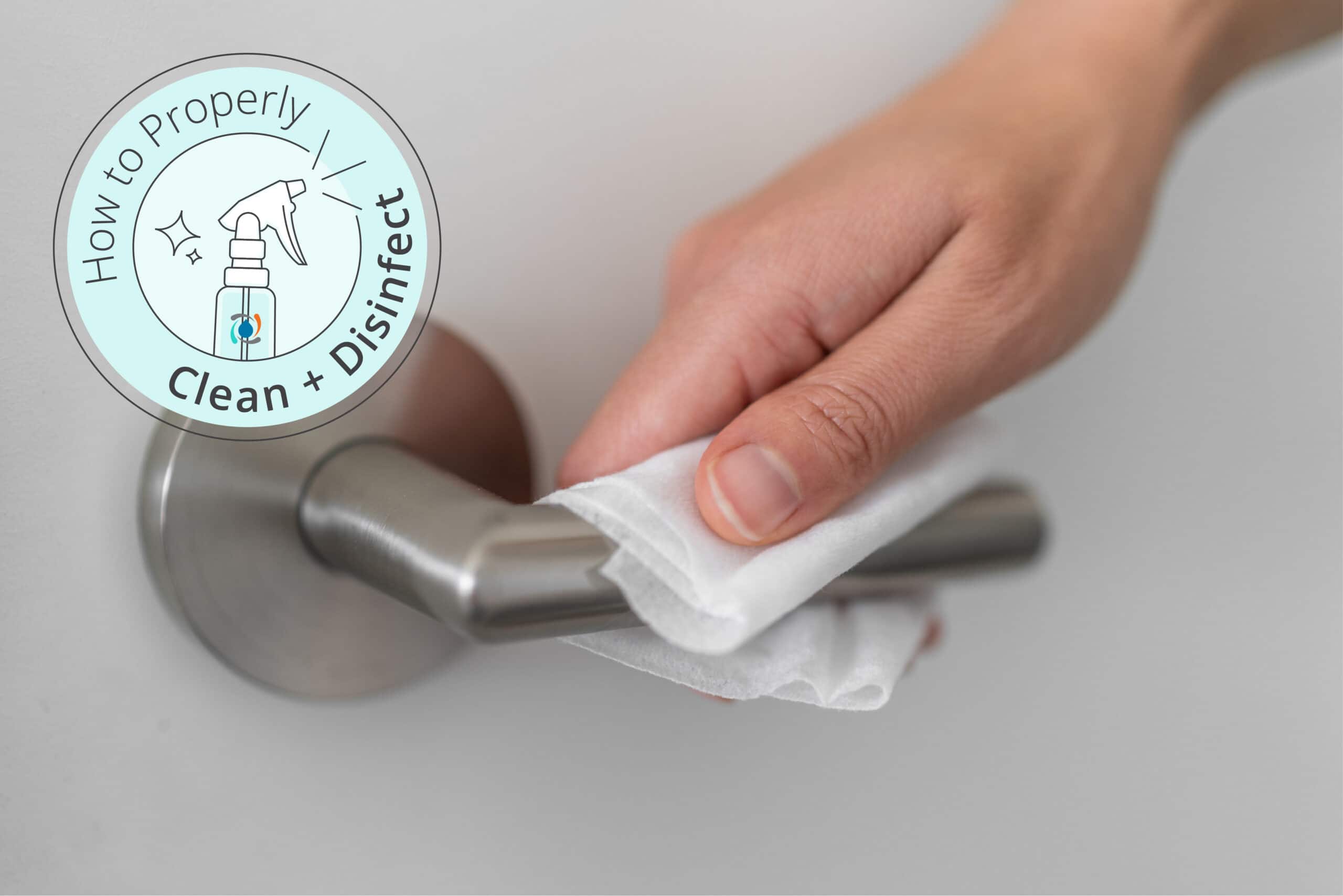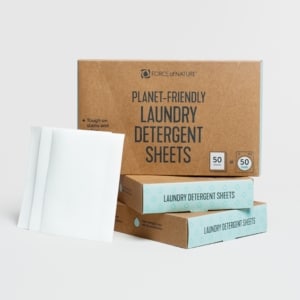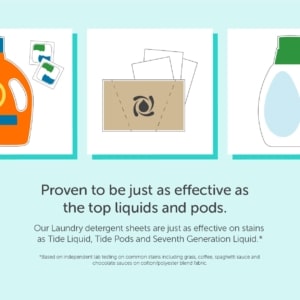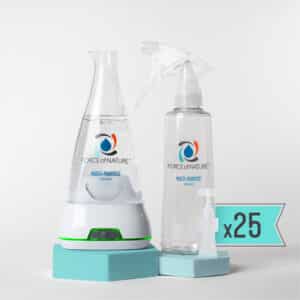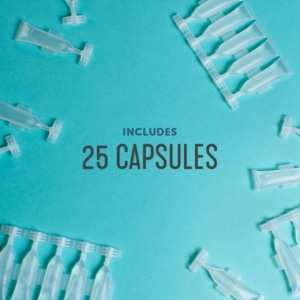As a business owner, even before the pandemic, the health and safety of your staff, customers, colleagues and clients has likely always been your top priority. And, with so many great cleaning and disinfecting products out there – it should be pretty easy, right? Sadly, this isn’t the case. Conventional cleaning products are a poorly regulated product category and many of them include toxic chemical ingredients that pose serious hazards to our health. In fact, the scientific community is calling for increased study of these chemicals and considers exposure to them a growing and important public health concern. Exposure to these products is so damaging to our lungs that a major study showed the damage from daily exposure to the most common cleaning chemicals can be the same as smoking a pack of cigarettes a day. As a response to the pandemic, our exposure to these products has increased astronomically, which has also increased the potential risk to our health and safety. This is particularly critical for the over 25 million people in the US who suffer from asthma and 50 million who suffer from allergies (which can be triggered and exacerbated by cleaning chemical ingredients) and children, who are disproportionately at risk from these chemicals due to their small size and rapidly developing bodies. The good news is that we worked hard to develop our revolutionary cleaning system and EPA-registered disinfectant, Force of Nature, which offers the combination of toxic-free and effective 3-in-1 cleaning, sanitizing, and disinfecting.
How And When To Safely Clean & Disinfect Your Business
There is a lot of information (and misinformation) around cleaning product ingredient safety, as well as how to safely and effectively disinfect surfaces in your business. Here’s what you need to know so you can keep your clients and staff safe from sickness-causing germs without exposing them to harmful chemicals.
1. When and How To Clean Effectively
You don’t always have to do both and, when using conventional disinfectant products, you need to be cautious about exposing your customers, clients and staff to toxic chemicals, so disinfecting should be done carefully and strategically. A great resource for business disinfecting is the EPA’s Six Steps For Safer Disinfecting.
The important distinction between cleaning and disinfecting is that cleaning is the removal of dirt and residue on surfaces that can harbor germs, whereas disinfecting is a term regulated by the EPA for products that have been tested and confirmed by the EPA for killing 99.9% of the germs they claim to on their labels. It’s important to note that not all disinfectants have been registered by the EPA to list all germs on their labels. So for example, if you want a product that kills SARS-CoV-2, the novel coronavirus that causes COVID-19, you need to use a product that is included on the EPA’s List N.
If you are using a product that is labeled as both a cleaner and a disinfectant, cleaning will be the first step and involves using a detergent or soap to remove residue from a surface. If disinfecting is required, cleaning the surface first allows the maximum amount of disinfectant to come into contact with the surface to kill germs, viruses, and bacteria.
For general cleaning purposes, the CDC says cleaning once per day is usually enough. Businesses should prioritize high-touch surfaces and high-traffic areas, cleaning them at least once a day, and following the safety precautions on the product’s label including wearing any protective gear.
Force of Nature is both a multi-purpose cleaner and an EPA-registered disinfectant that is included on List N for use against SARS-CoV-2. Force of Nature is certified to be 100% free from the most common allergens by Mayo Clinic’s allergy rating system and does not require any protective gear when in use. It’s also a powerful deodorizer because it’s so effective at killing the bacteria that causes odors.
2. When And How To Effectively Disinfect
You probably already regularly disinfect your business to protect your staff and customers from sickness-causing germs. In some cases, such as when a case of COVID-19 or another transmissible illness is confirmed, or if people with an increased risk of severe illness are present, you may need to disinfect your facility more often. If this is the case, and your product does not specify that it can be used both for cleaning and disinfecting, start by cleaning high-touch and high-traffic surfaces so that they’re free from any visible soil or residue before disinfecting. Then, select a disinfect product from EPA List N and follow the instructions on the label to ensure you are using it safely and effectively. Many products will need to be left to air dry for a specific “dwell time” and may need to be rinsed afterward to avoid coming into contact with your client or staff members’ skin.
Disinfectants often contain serious and toxic chemicals, so make sure you follow best practices for:
- Ventilating the area
- Wearing appropriate protective gear and clothing
- Labeling and storing the product
- Not mixing or combining products unless following manufacturer instructions
- Not ingesting, breathing, or drinking disinfectant products
- Taking additional precautions to protect those with asthma and allergies
Force of Nature is a cleaner and disinfectant product that can be used without protective gear and does not need to be rinsed after use.
While there are other disinfectant methods like UV radiation, LED blue lights, sanitizing tunnels, fogging, fumigation, and electrostatic sprays, these methods have either not been proven to be fully effective against viruses like SARS-CoV-2, or they carry additional health risks that mitigate their usefulness. The CDC states that, in most cases, traditional disinfecting methods are more than sufficient.
3. Disinfecting When Someone Has Been Sick or Tested Positive For COVID-19
If someone at your facility is sick or has been diagnosed with COVID-19, it can increase your concern about cleaning and disinfecting. Here are some of the top tips for cleaning and disinfecting after someone has been sick at your facility:
If less than 24 hours have passed:
-
- If possible, close off any areas that were used by the sick person and wait at least a few hours to begin cleaning and disinfecting
- Increase ventilation in the area by opening doors and windows and using HVAC filtration systems like air conditioners
- Use a product from the EPA’s List N that is both a cleaner and a disinfectant, like Force of Nature
- Wear protective gear like a mask and gloves to protect yourself from any remaining germs (and, if not using Force of Nature, from the cleaning chemicals as well)
- Clean and disinfect the main areas the person interacted with
- Store cleaning and disinfecting products safely away from children
If more than 24 hours have passed
-
- Disinfect with a gentle yet effective disinfectant on the EPA’s List N like Force of Nature
The Top Ingredients To Avoid For Safer Disinfecting
Because companies don’t have to prove the chemicals they are using are safe before putting them into products, disinfectants and cleaning products can pose a serious risk to the health of your employees and clients. Here are some of the most caustic ingredients to avoid when selecting a product for your business.
- Sodium Hypochlorite (Bleach): is caustic to the soft tissues in our bodies, particularly our airways. It also loses efficacy over time, so it is not as shelf-stable as you might think. The CDC recommends that bleach should be not be used around people with asthma or allergies.
- Quats (Quaternary Ammonium Compounds): Quats are a class of compounds that are commonly found in disinfectant products because of their effectiveness in killing microbes. Quats are associated with a broad range of health issues including skin and respiratory irritation, exacerbating allergy and asthma symptoms, triggering asthma and allergies in people who have never had them, and even reproductive toxicity. It can be hard to find quats on a label, but ingredient names that end in “ammonium chloride,” or are labeled “antibacterial” or “antimicrobial,” most likely contain quats. This is another ingredient that the CDC recommends avoiding if the products will be used around people with asthma or allergies.
- Ammonium Hydroxide (Ammonia Water, Liquid Ammonia): used often in drain openers and oven cleaners, toilet cleaners, and other household cleaners, this chemical causes severe skin burns and eye damage, and respiratory irritation.
- Fragrance: Fragrance ingredients are considered trade secrets and are not regulated for safety. That means that the one word “fragrance” on a label can mask a cocktail of toxic ingredients linked to asthma, hormone-disruption, and allergies.
- Phthalates: Phthalates go hand in hand with fragrance as they help fragrance stick around longer. They’re also endocrine-disrupting chemicals that can cause serious health effects like endocrine disruption, birth defects and developmental delays, and negative impacts on the immune system. You won’t find these listed on labels though, because they are considered a fragrance ingredient that requires no disclosure to the consumer.
- Triclosan: Triclosan is an antimicrobial agent that is often correlated with toxic health effects like endocrine disruption.
- Alcohol: Alcohol is drying to your skin and respiratory system and can cause skin and eye irritation, especially in babies and children. It’s also correlated to an increase in poisonings and eye injury in children under 12.
An Effective Way To Clean And Disinfect Your Business – Without Toxic Chemicals!
At Force of Nature, we’re proud to have created a gentle, yet effective cleaner, deodorizer and disinfectant that is on the EPA’s list N, the disinfectants approved for use against SARS-CoV-2, the cause of Covid-19. We’ve harnessed the power of our active antimicrobial ingredient, hypochlorous acid (HOCl), which is created by our immune systems to fight infection and used in wound healing and eye care products. Our revolutionary device makes this powerful cleaner and disinfectant solution on-demand whenever and wherever you need it, so you don’t need to worry about running out or stocking up on cleaning and disinfecting products. And, you can save even more by signing up to subscribe and save on our convenient capsules! Learn more about Force of Nature, our EPA-registered disinfectant, and how you can use it in all kinds of applications for your business, too. We have 2 size options to meet the needs of smaller and larger spaces: our original 12 ounce Force of Nature, and our new large-capacity, commercial-grade Force of Nature Pro that makes 32 or 64 oz. If you’re purchasing for a large business or organization, we can customize pricing, assortment and training for you! Click here to get started.
